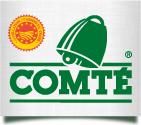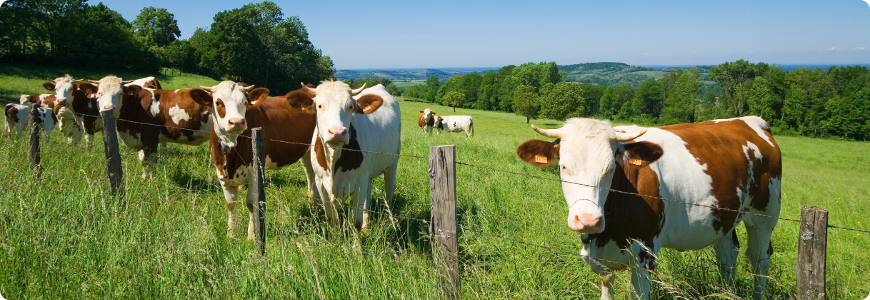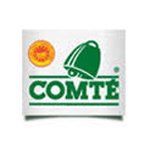Life on the farm
follows the seasons
- The milk for Comté is produced at over 2,400 family farms practicing nonintensive agriculture, a farming method that, rather than focusing on large yields, instead focuses on quality, taking into account soil characteristics and the diversity of plant species and microflora. The average annual production of a farm producing Comté milk is about 270,000 liters (71,300 gallons), or 500 wheels.
- The first artisan to have a hand in the making of Comté is a robust creature with a gentle gaze and tranquil gate. This is the Montbéliarde cow, a large animal with a wide girth, a broad muzzle and a reddish-brown and white hide. Only Montbéliarde cows (95% of herds) and French Simmental cows (5%) are authorized to produce the milk for Comté cheese.
- During the entire length of the warmer months, the cows graze in open pastures where they enjoy a minimum of 3.2 acres (1.3 hectares) of land each. During the winter season, the cows eat locally harvested hay. GMO’s, ensilage and all fermented feed are forbidden, as they adversely affect the quality of the milk.
- Every day the farmers deliver their milk to their local cheesemaking facilities, or fruitières. Comté is therefore produced every day of the year. Since the milk must be crafted into Comté within 24 hours maximum of milking to preserve the lactic microflora in the milk and thus its aromatic potential. Each fruitière must collect milk from dairy farms located within a 16-mile (25 km) diameter maximum.
- The soils and microflora in the Jura Massif are very diverse, and this is reflected in the milk and ultimately in the Comté. Each wheel of Comté is thus a reflection of a specific terroir located within the PDO.








